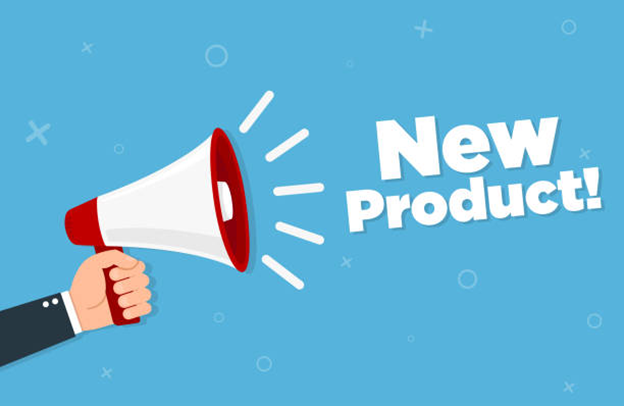 How to leverage loyal customers into your best advocates to help market your business and influence purchases from new customers
How to leverage loyal customers into your best advocates to help market your business and influence purchases from new customers
Customers have the ability to make or break your business based on their positive or negative influence on others. That’s why any good business person knows that providing excellent customer service and nurturing repeat, loyal customers is the key to success.
Many potential customers rely on testimonials from current or previous customers when evaluating products or services from a business. A customer testimonial captures the essence of a customer’s experience with your business and can speak volumes for your products, your service level and your ability to deliver on your brand promise.
The best news for small businesses is that customer testimonials are essentially free advertising. It’s like having your best sales people on staff – without having to put them on your payroll! Once you get a great customer testimonial you can use it on your website, in your sales pitches and throughout your marketing efforts to help sell your business.
Developing a Customer Testimonial Program
If you have happy customers, chances are you already have a few testimonials on hand. You received positive feedback from a customer and you turned it into a testimonial with their permission. You may have even been lucky enough to have testimonials actually offered to you by customers. But, as with many small businesses, you probably don’t have a “customer testimonial program” in place that actively encourages and gathers new testimonials.
Most businesses can get one or two customer testimonials fairly easily, but the trick is putting a process in place to continually gather valuable and current testimonials. Because you certainly don’t want your best testimonial to be one you got from a customer that did business with you 10 years ago. Outdated praise won’t necessarily be the best assessment of your business for potential new customers.
Creating an ongoing flow of testimonials also helps to demonstrate to new customers that your product and service offering is strong, consistent and only improves over time.
Ideas for Creating Customer Testimonial Programs
If you want more customer testimonials, your business should strive to create an atmosphere that encourages feedback and rewards sharing of customer experiences with your business.
Here are some tips to help you ramp up inbound feedback activity and leverage your most loyal and influential customers.
Showcase Testimonials
Most people actually like to be in the spotlight. When they see other customers being featured, they are likely to want to receive the same type of exposure. Be sure to prominently showcase customer testimonials throughout your website, your marketing materials and social media networks.
Provide Friendly Feedback Mechanisms
Make it really easy for customers to give you feedback… don’t make them dig around for a feedback mechanism on your site. Having a customer-friendly call to action also helps. Phrases like “Share Your Story”, “Tell us What You Think”, “Share Your Love” or “Be a [Company Name] Star” are much more engaging than a simple “contact us” or “feedback” link.
Monitor Social Sites
Be on the lookout for active participants on your social media sites like Facebook, Pinterest or Google+. Most outspoken customers on social media sites are happy customers (of course if they are not you will know that too and it’s best to handle the situation promptly). Reach out to social media contacts that exhibit positive feedback and ask them if they would be interested in sharing their experience in the form of a quote or story/profile.
Review Online Reviews
Much like feedback on social media sites, online reviews are a good source of potential customer testimonials. Of course the positive review can work in your favor as a testimonial, but getting permission to showcase the customer’s feedback in a more formal fashion can help give it more visibility and assist your sales efforts.
Reward Story Sharing
A small reward for sharing a customer experience can go a long way to show your appreciation, but be careful not to appear as though you are paying for a testimonial. Choose token rewards like a free t-shirt, discount on a service or bonus products. Items that customers are likely to use and will be seen by others (such as t-shirts) are particularly useful because they turn customers into walking and talking billboards for your business.
Launch Photo or Video Contests
Sometimes your customers need a little more incentive to share their story and contribute their feedback. Get them actively contributing to your marketing library by launching a photo or video contest. The photo or video should show the customer using your product in some way. The one with the best story wins the contest (usually a cash prize or free services/products). Photo promotions with Facebook or other social media sites work very well to spread the word. For video contests, have them upload the video to YouTube and send you the link to the video. Have viewers vote with “likes” on YouTube to select the winner. A contest can create a huge influx of potential customer testimonials. The winner can of course be a testimonial, but other submissions can too.
Testimonials vs. Reward or Review Programs
You may be wondering… How are customer testimonials different than loyalty reward programs or online reviews?
Loyalty reward programs are typically points-based tracking programs that encourage repeat transactions or specific behavior (such as referrals). Customers can accumulate points to reach various rewards in the form of discounts, free services/products or tangible prizes. Customers participating in loyalty programs are very valuable to a business because they are typically very happy and good advocates. The problem with reward programs is that there is typically not an easy way to capture their praise and use it as a testimonial in marketing efforts.
Online review programs are mostly anonymous and based on specific products purchased online. Customers provide ratings and feedback on the product (which usually includes customer service) and can be a great sales tool for potential customers. Online reviews can be a big influence on purchase decisions of new customers. The problem with online reviews is that you cannot control the presentation or wording of the review. Also, because the review is typically tied to a product it may not be as visible as you would like on your website.
A good customer testimonial program combines ideas behind reward and review programs, showcases the positive feedback and leverages it as a sales tool.
Typical testimonials can be as simple as a quote attributed to a customer, or as detailed as a full story or profile of the customer situation and how your business helped meet their needs.
Other components of a testimonial that can very useful for sales and marketing include:
- Customer name – a real name adds credibility (first names are usually acceptable)
- Location – important for local businesses or to show geographic reach of a business
- Photos – placing a face to a testimonial is more engaging
- Videos – seeing and hearing customers speak about your business or demo your product is a very valuable sales and marketing tool
The important thing with a solid ongoing testimonial program is getting into the habit of asking for the testimonial. Whether you are a one person shop or a small business with a sales and customer service staff, everyone should be focused on asking for permission to use feedback from a customer as a testimonial. You’d be surprised – most happy customers are very willing to share their story with others. And once you have that testimonial… don’t be afraid to use it!



